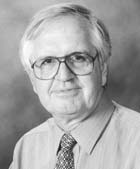41st IUPAC Council Meeting
Brisbane, Australia, 7-8 July 2001
41st
IUPAC General Assembly
> Info
page
Election of Officers and Bureau Members
According to Statute 5.401, Council must elect:
- Officers of the Union
- Elected Members of the Bureau
Nominations for the various positions that fall
vacant at the end of 2001 must be received by the Secretary General
at the IUPAC Secretariat before 7 May 2001, i.e., two months before
the start of the Council meeting (Bylaw 2.221). The situation for each
position is set out below:
President
 |
Prof.
Pieter S. Steyn (South Africa), Vice President and President-Elect,
becomes President on 1 January 2002 (Statute 4.2).
> View
'99 bio - while candidate for vice president
|
Vice President–Vacancy
The vice president to be elected at the 41st Council Meeting will
be president-elect, and will become president on 1 January 2004.
Nominations for vice president received are as follows:
- Prof. Hitoshi Ohtaki (Japan) >
bio
- Prof. Leiv K. Sydnes (Norway) >
bio
Past-President
The retiring President, Dr.
Alan Hayes (UK) will remain an Officer (Statute 6.1) and a Member
of the Bureau for a period of two years (Statute 7.2).
Secretary General
Dr. Edwin D. Becker
(USA), the present Secretary General, was elected to a second four-year
term (2000- 2003) in 1999.
Treasurer
Dr. Christoph
F. Buxtorf (UK), the present Treasurer, was elected to a four-year
term (2000-2003) in 1999.
Bureau–Six Vacancies (Minimum)
According to Statute
7.2, the Bureau consists of the Officers, the Presidents of the
Divisions/Sections, together with not less than ten other Members elected
by Council, who shall be known as "Elected Members".
At the conclusion of the 40th Council in Berlin,
there were ten Elected Members of the Bureau. At the 41st Council, the
Bureau will make recommendations to Council as to the number of Elected
Members (ten or more), who should be on the Bureau for the succeeding
two years.
Elected Members are elected for a period of four
years, and they are eligible for election for a second period of four
years.
No Adhering Organization shall have more than one
Elected Member of the Bureau.
Statute 7.2 also states that "the principle of fair
geographical representation of Members shall be taken into account".
Elected Members of Bureau, retiring in 2001, who
are not eligible for reelection, but may be nominated for another office:
Prof. E. J. Grzywa
(Poland); Prof. J.
W. Lorimer (Canada); Prof.
L. Sydnes (Norway); Prof.
C.-H. Zhang (China).
Elected Members of Bureau, retiring in 2001, who
are eligible for reelection for a further four-year period:
Dr. E. P. Przybylowicz
(USA); Prof. G. Somsen
(Netherlands).
Elected Members of Bureau, who were elected at the
40th Council until 2003:
Prof. N. J. Moreau
(France); Prof. O.
M. Nefedov (Russia); Prof.
H. Ohtaki (Japan); Prof.
G. M. Schneider (Germany).
At least six Elected Members of the Bureau must
be elected at the 41st Council in Brisbane, i.e., the minimum number
of ten Elected Members (Statute 7.2) less the four Elected Members who
continue in office until 2003.
Nominations for Bureau received by the statutory
deadline of May 7th, 2001, are as follows:
- Prof. C. Bai (China) >
bio
- Prof. S. Chandrasekaran (India) >
bio
- Prof. R. G. Gilbert (Australia) >
bio
- Prof. Dr. S. Gültekin (Turkey) >
bio
- Prof. G. Horvai (Hungary) >
bio
- Prof. J. �. J�nsson (Sweden) >
bio
- Prof. M. Moo-Young (Canada) >
bio
- Dr. E. P. Przybylowicz (USA)–reappointment
>
bio
- Dr. A. Smith (UK) >
bio
- Prof. G. Somsen (Netherlands)–reappointment
>
bio
The situation -as of 28 March 2001- was published
in Chem.
Int.
23(3), 72-79, 2001. At that time, the nominations of Prof.
C. Bai, Prof. S. Chandrasekaran, and Prof. J.A. J�nsson had not
yet been received.

